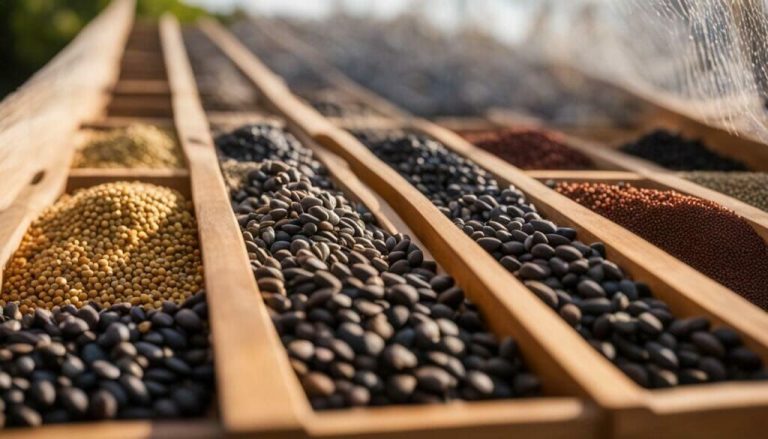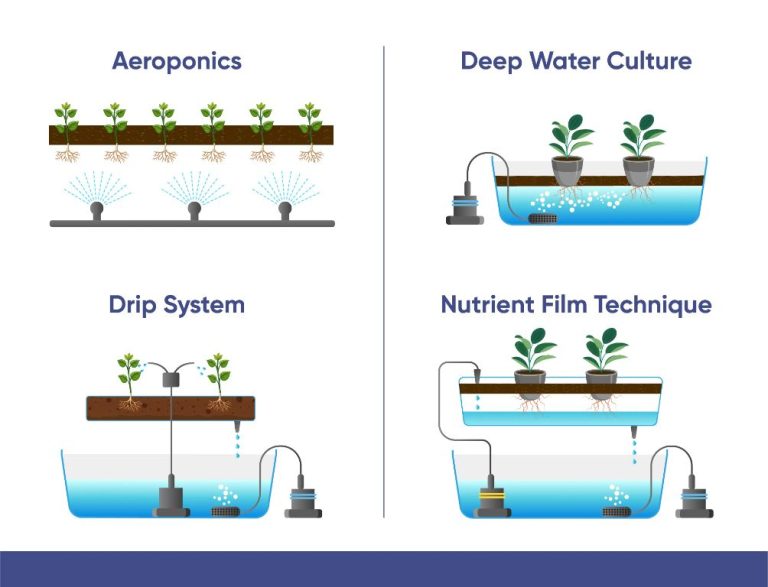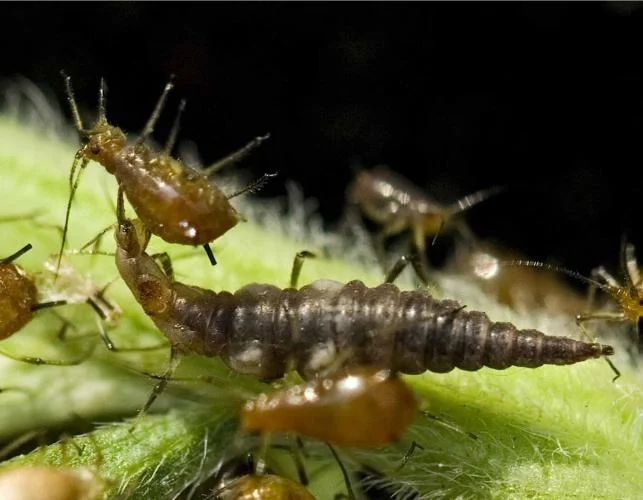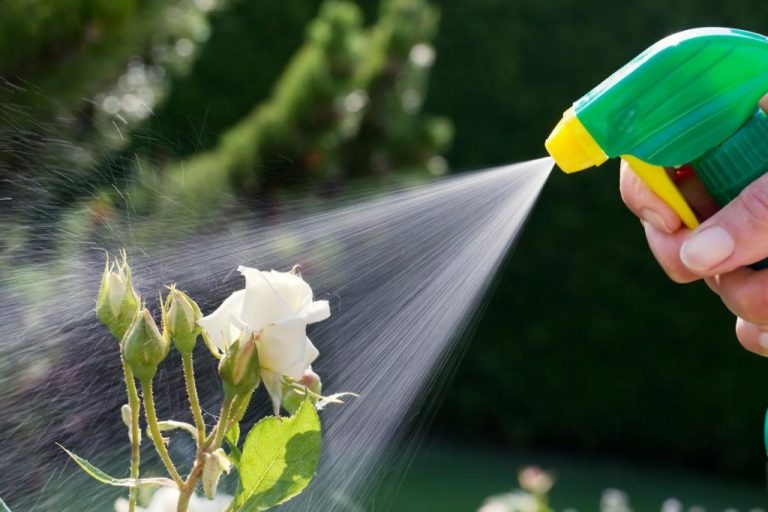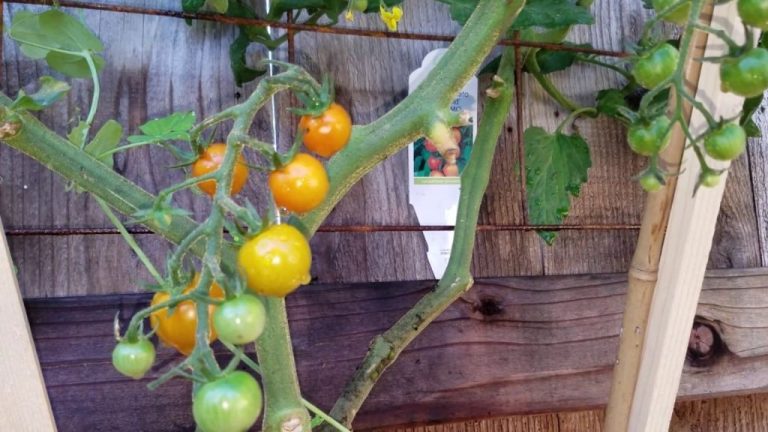Organic Urban Gardening: Growing Food In The City
Urban gardening refers to the practice of growing fruits, vegetables, herbs, and flowers in an urban setting, such as on a balcony, rooftop, backyard, or community garden plot. In recent years, urban gardening has seen a surge in popularity due to several benefits it provides.
According to Must-Know Urban Farming Statistics, urban farming has the potential to increase job positions by 4.1% within an eight-year period. In some developing countries, urban farming supplies up to 90% of the local produce consumed. These statistics demonstrate the growing popularity of urban gardening on a global scale.
Some key benefits of urban gardening include providing access to fresh produce, building community, beautifying neighborhoods, reducing environmental impact through reduced transportation needs, and improving mental and physical well-being through outdoor activity. For city dwellers with limited space, urban gardening allows the opportunity to connect with nature and grow nutritious food steps from their front door.
Choosing a Location
When deciding where to put your urban garden, sunlight exposure is crucial. Most edible plants require at least 6 hours of direct sunlight per day, with 8-10 being ideal. Consider how buildings, trees, and other structures shade your yard throughout the day before picking a spot. South-facing locations tend to get the most sun (“Best Cities for Urban Gardening,” 2023).
Evaluate how much space you realistically have for gardening. In-ground gardens allow you to grow more, but even a small container garden on a balcony can produce a worthwhile harvest. Match the size of your garden to the space you have after accounting for pathways and access (“These Are the Best Cities for Urban Gardening,” 2022).
Urban gardeners must decide between planting in the ground or using containers. In-ground planting gives you more flexibility in what you can grow, requiring less frequent watering and fertilizing. However, urban soils often contain contaminants like lead that can accumulate in edible plants. Containers isolate plants from contaminated soil, but require more intensive watering and nutrients (“The Best Cities for Urban Gardening,” 2022).
Before planting in the ground, test your urban soil for heavy metals and contaminants. If levels are unsafe, focus on container gardening or build raised garden beds filled with clean soil. Otherwise, adding organic material like compost can help dilute contaminants (“These Are the Best Cities for Urban Gardening,” 2022).
Preparing the Site
When starting an urban garden, preparing the site is a critical first step. Urban soils are often compacted and contaminated from years of development, so testing and amending the existing soil is usually necessary (1).
The EPA recommends testing urban soils for contaminants like lead and arsenic before gardening. Contaminated soils can be remediated through adding compost or clean topsoil (2). Building raised beds and filling them with imported, clean topsoil is a common technique in urban gardening to avoid contaminated native soils. Raised beds provide well-drained, loose soil optimal for planting (1).
For sites with poor native soil, installing vertical gardening systems is another option. Systems like green walls and vertical hydroponic towers allow growing up surfaces without interacting with the ground. This avoids soil contamination issues while maximizing limited urban space (1).
(1) https://www.sare.org/publications/building-soils-for-better-crops/soils-for-urban-farms-gardens-and-green-spaces/
(2) https://www.epa.gov/sites/default/files/2014-03/documents/urban_gardening_fina_fact_sheet.pdf
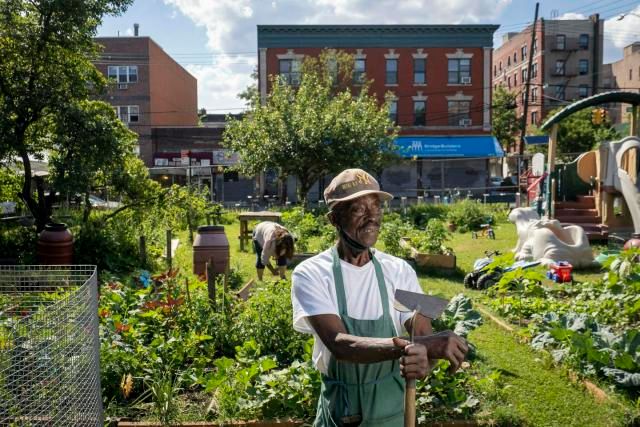
Picking Crops
Choosing the right crops is crucial for a successful small urban garden. With limited space, you’ll want to select plants that are compact, high-yielding, and suited for container growing. Some top picks include:
Leafy greens like lettuce, spinach, kale, and chard produce a lot of edible material in a small space. They grow quickly and can be planted densely or succession planted. Salad greens like mesclun mixes are a great choice (www.gardeners.com).
Vine crops like tomatoes, cucumbers, beans, and squash can be trellised vertically to maximize space. Select compact, bushy cultivars or try growing them up a sturdy trellis. Cherry tomatoes are very prolific and work well in containers (www.new-terra-natural-food.com).
Root crops like carrots, radishes, and beets make good use of limited soil depth. Beets and lettuce can be grown as ‘cut-and-come-again’ crops for continual harvest (www.thespruce.com).
Herbs like basil, oregano, thyme, rosemary, and sage are essential for any urban garden. Most perennial herbs will overwinter indoors or outside in mild climates.
When choosing crops, be sure to consider sunlight needs and time to harvest. Pick a mix of sun-loving and shade-tolerant plants. Focus on quick maturing crops as well as some longer season options for sustained harvest. With smart planning, even the smallest space can yield a productive vegetable garden.
Planting
When choosing when to plant, it’s important to pay attention to your local frost dates and planting zones. Most vegetables thrive in warm weather and should be planted after the last frost date for your area, which is typically in late spring or early summer (Source). Cooler weather crops like lettuce, kale, and radish can be planted earlier in spring. Refer to a planting calendar or zone map to determine optimal planting times.
Proper spacing is crucial to prevent overcrowding and allow adequate airflow and sun exposure. Follow seed packet spacing recommendations for each variety. As a general rule, plant seeds at a depth of 2-3 times their size and space plants at 50% of their mature spread. For example, lettuce can be planted 1⁄4 inch deep and thinned to stand 8 inches apart (Source).
Creating the right germination conditions is key for seeds to sprout successfully. This means maintaining consistent soil moisture and the proper planting depth. Gently water newly planted seeds daily, keeping the top inch of soil moist. Use a spray bottle or watering can to avoid washing seeds away. Cover seeds with soil or mulch to retain moisture and provide darkness for germination. With care, most varieties will sprout within 5-21 days.
Watering
Proper watering is essential for a thriving urban garden. Establish some form of irrigation to ensure your plants get adequate water on a consistent basis. Drip irrigation or soaker hoses are often used in urban gardens as they conserve water and allow for targeted application (Watering Your Garden: When and How Much). Hand watering with a hose or watering can also works for small gardens.
Consider rainwater harvesting by collecting water from downspouts or rain barrels to use in your garden. This provides a free and sustainable water source. Just be sure to use rainwater soon after collecting as it can go stagnant (How to Water Garden 101).
Gardens in containers and raised beds will require more frequent watering than in-ground gardens. Check the soil moisture daily by touching the top few inches of soil. Water when the top 1-2 inches become dry. Containers may need watering daily in hot weather (Watering the vegetable garden).
Aim to provide about 1-2 inches of water per week for most gardens, adjusting as needed based on weather, soil type, and plant needs. Deep watering encourages stronger root growth. Consistent moisture is key, allowing the soil to dry out between waterings.
Fertilizing
Proper fertilization is key for growing healthy plants in an urban garden. When fertilizing organically, it’s important to use natural sources of nutrients rather than synthetic chemical fertilizers. Some good organic fertilizer options include:123
- Compost – Decomposed organic matter that provides a slow, steady release of nutrients.
- Manure – Packed with nitrogen, phosphorus, and potassium. Should be aged before using.
- Worm castings – The end product of vermicomposting, rich in nutrients and beneficial microbes.
- Bone meal – Provides phosphorus and calcium derived from animal bones.
- Blood meal – Dried, powdered animal blood is high in nitrogen.
Chemical fertilizers provide an immediate boost of nutrients, but can damage soil health over time. Organic options improve soil structure and feed beneficial microbes in addition to plants. Making your own compost is one of the best ways to create free, organic fertilizer.
Fertilizing on a regular schedule throughout the growing season is recommended. Apply lower nitrogen fertilizers like bone/blood meal at planting time. Side-dress growing plants with higher nitrogen fertilizers like compost or manure every 2-4 weeks. Always follow package instructions for application rates.
Controlling Pests
Growing food organically in an urban environment comes with the challenge of controlling garden pests without the use of synthetic chemicals. Some of the most common urban garden pests include aphids, Japanese beetles, snails and slugs, cabbage worms, tomato hornworms, squash bugs, and potato beetles [1]. Managing these pests organically requires an integrated approach.
Organic pest control starts with prevention through crop rotation, companion planting with pest-repelling plants like onions and garlic, and attracting beneficial insects like ladybugs and lacewings. Hand-picking pests, using row covers, and applying organic sprays like neem oil, spinosad, Bt (Bacillus thuringiensis), pyrethrin, and diatomaceous earth can also be effective [2]. As a last resort, organically-approved pesticides containing active ingredients like pyrethrins and spinosad can be used.
Planting flowers and herbs that attract pollinators and predatory insects is key. Some beneficial insect-attracting plants include dill, fennel, cilantro, cosmos, zinnias, sunflowers, bee balm, and yarrow. A healthy garden ecosystem full of diverse plants goes a long way in preventing pest infestations organically.
Harvesting
Knowing when to harvest different crops is key for getting the best flavor and maximizing yields in an urban garden. Leafy greens like lettuce and spinach should be harvested when the leaves are young and tender, usually within 2-4 weeks of planting. Fruiting crops like tomatoes, peppers, beans, and cucumbers can be harvested when the fruit is fully mature but still firm. This is typically 50-80 days after transplanting seedlings. Root crops like carrots and potatoes can be left in the ground and harvested as needed once they are large enough to eat. On average, carrots take 2-3 months to mature and potatoes take 3-4 months.
Proper storage is important for preserving harvests. Leafy greens should be eaten immediately or stored in the refrigerator in plastic bags for up to 5 days. Fruiting crops can be left at room temperature for a few days and then refrigerated. Root crops and potatoes are best stored in a cool, dark place like a basement or cellar. Excess produce can also be preserved by canning, freezing or drying. With some planning, urban gardeners can harvest crops for months from a single planting.
Sources:
https://www.urbanharvest.org/gardens/
Conclusion
Urban gardening provides many benefits for city dwellers. Growing your own fruits, vegetables, and herbs can give you access to fresh, nutritious produce and allow you to know exactly where your food comes from. Urban gardens foster community and bring neighbors together through a shared interest. They provide environmental benefits as well, turning unused spaces into small pockets of nature that support biodiversity. Gardening also promotes sustainability by reducing food miles and allowing more people to grow food close to where they live.
The future of urban gardening looks bright as more people realize its advantages. Many cities now have policies in place to support urban agriculture through initiatives like permitting urban farms, allowing the sale of produce grown on site, and creating gardening programs at schools and public housing. Technology is making gardening more productive with innovations like vertical farming, hydroponics, and LED lighting. It’s easier than ever for urban dwellers to get growing.
For those interested in starting their own urban garden, here are some excellent resources:
Urban Grower Resources From USDA

